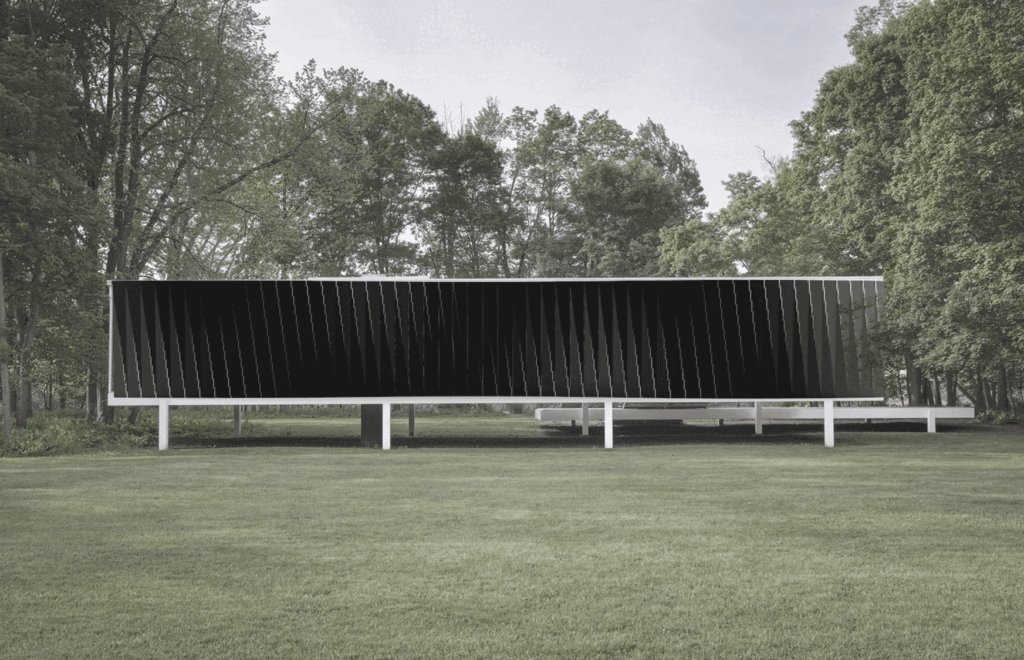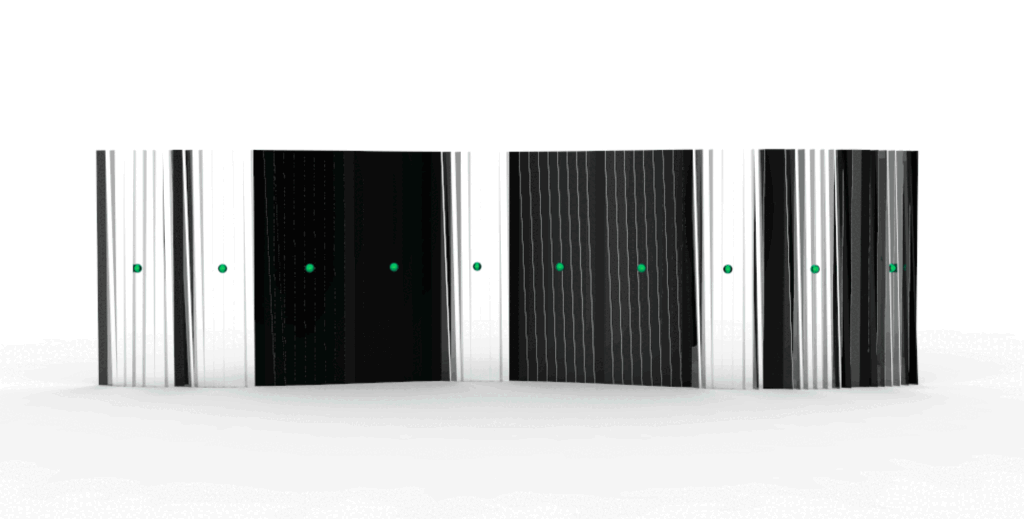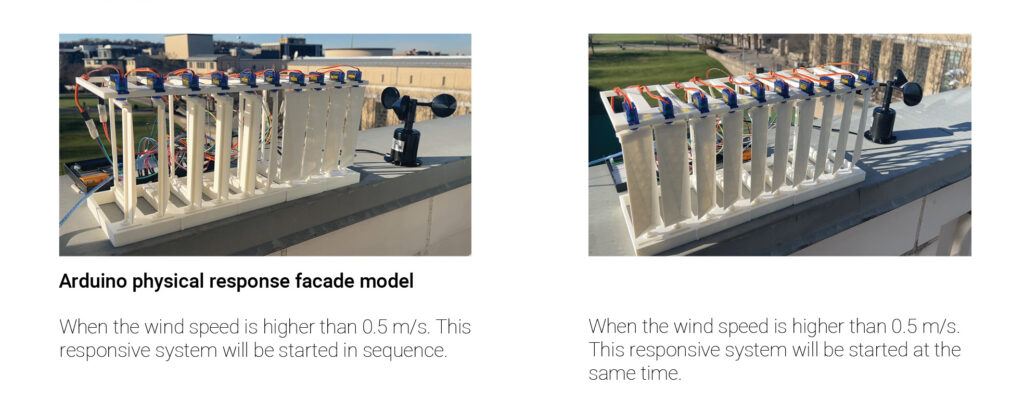An adaptive tool that synchronizes physical and digital facades for ventilation comfort using real time climate data.
Challenge
Architects often rely on static shading devices or mechanical systems for ventilation comfort, which can lead to inefficiency, energy waste, and rigid design outcomes. VentAssist addresses this by introducing a data-driven responsive facade tool that automates the opening and closing of louvers based on climate data and real-time sensor input. The system was designed to operate both in digital simulations (Grasshopper + Ladybug) and in physical prototypes (Arduino + wind sensors) to test adaptability across contexts, seasons, and geometries. This is an all in one tool which addresses real time climate changes, helps the user select the sensors required on the facade panel, change geometry and density of the facade panels, test movements in different seasons, and analyze real time physical prototype.

Process
Design rule for User: Users can select site location → EPW + windrose data updates panel behavior. Users can set louver type, density, and rotation range. Comfort thresholds must be defined (wind/temp levels triggering facade/AC).
Design rule for Creators: Panels must remain parametric to support substitution (2D → 3D units). System requires synchronized Grasshopper script + Arduino logic. Must maintain flexibility for adding new sensors or databases.
Matrix
- Must source climate data from EPW files, Nullschool wind database, and physical wind sensors.
- Must compare environmental conditions (wind speed, temperature) against comfort thresholds.
- Must generate facade responses in both 2D (rectangular/triangular louvers) and 3D units.
- Must synchronize physical prototype with digital Grasshopper model.
- Must evaluate facade behavior across different geographic locations and seasonal variations.
Features
- Sensor Generator: Customizable number of facade sensors linked to surface area or user input.
- Geometry Unit Iteration: Panel variations (triangular, rectangular, 3D).
- Density + Orientation Control: Dynamic adjustment of louver spacing, density, and rotation angle.
- Real-Time Linkage: Arduino wind sensors directly feeding data into Grasshopper to mirror behavior digitally and physically.
- Dual Feedback Loop: System evaluates whether to open facade or trigger AC system depending on comfort conditions
VentAssist was developed iteratively, starting from digital simulation with EPW data, then layered with real-time sensor integration, before moving to Arduino-driven physical prototypes. Each sprint exposed constraints from data noise in sensors, to panel geometry stability, to synchronization issues between Rhino and Arduino and refinements were made. This staged approach allowed both conceptual design exploration and hardware-in-the-loop validation without locking into one rigid workflow.
Design:
Logic: This grasshopper tool is designed to generate a responsive ventilation system which first collects climate data from websites. Compares the global data from ladybug to data from real time sensors. It then evaluates if the facade should be open and closed. The tool also controls the geometry of the facade panels in 2D and 3D as well as number of sensors required through out the space. The system also controls the angle of rotation and the variable gradient with which it should open and close.

Data Collection Methods:
Data collection was done through 3 different kinds and types of resources. A general overview of Climate data was acquired from EPW files, Wind data was processed through Nullschool Wind data base and a physical wind sensor was used to get real time data


Components:
The tool contains sub-components as shown in the image on the left. Each subcomponent preforms a specific function for e.g there are buttons specifically for website data collection and physical data collection. Buttons for creating sensors, buttons which compare sensor data and then geometry producing buttons. All of these buttons were part of a plugin created in grasshopper.

Responsive to different locations & seasons:

Website Data collection:


Sensor Generation:
- Randomly changing number of sensors
- Apply the sensors on any types of surfaces
- Showing the physical geometries of sensors
- Changing the radius of the sensor


Geometry generation:
- Open and close based on the wind speed
- Randomly assign two lines for the responsive facade.
- Changing the density of the Panels.
- Changing the opening orientation of the panels
- Changing maximum and minimum turning angle of the facade.






- Generate vectors for each line.
- Vector.cross product to check for parallelism +.
- Check if geometry (mutual) intersects one another.
- Check if both conditions meet. true
- Then capture each in separate group lists using sets.
- Get all points. Startpt + endpt and set union.
- Sort points from min to max magnitude.
Changing panel densities:

Changing panel orientation:


Arduino Physical model:

Solution
Developed a Digital System. Grasshopper facade generator that opens/closes panels dynamically, visualized across locations and seasons.
Developed a Physical System: Arduino-controlled louver prototype that reacts to wind speeds in real time.
Synchronization: Digital and physical systems respond in parallel which demonstrate a cyber-physical workflow.
Impact
VentAssist proves how responsive facades can go beyond visual novelty into data-driven environmental performance. By linking climate datasets, real-time sensing, and parametric control, the system creates a framework for adaptive building skins. The prototype suggests future scalability: integration with IoT networks, ML-driven comfort prediction, and cross-domain applications in smart city infrastructure. Agile iterations showed the tool can evolve alongside shifting datasets, sensors, and user needs.